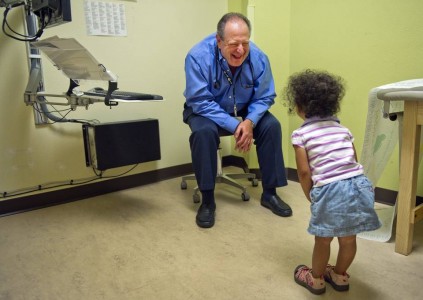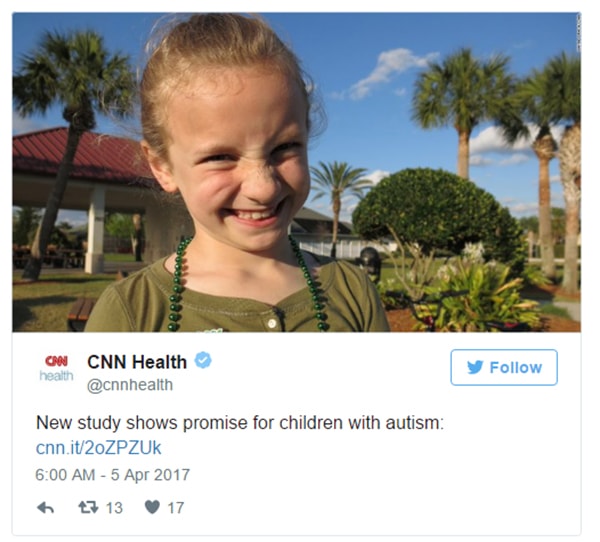Love. It is something you express to your children. You kiss boo-boos, you give hugs after a long day and you hold their hands just a little bit longer than necessary when crossing the street. You also probably tell them that you love them every chance you get. Love is something your children will show and tell you in reciprocation more and more as they grow older (although the law of diminishing returns may apply in the teen years). Displays of affection can do wonders to how you feel, but for the mother and father of an autistic child, it may seem like they can never give that gift to their child—or receive it in return.
Autism
An avoidance of social touch and an inability to understand or take part in verbal and nonverbal social communication are just two of autism's characteristics, which are often grouped into bigger areas of concern like overall behavior, social interactions, language development and sensory sensitivity. Bearing a child with autism is a growing concern for many parents as the number of people it affects has risen over the years. While this increase may be contributed to how autism is diagnosed, it could be that other factors are increasing its prevalence. As of now, autism affects one in 37 boys and one in 59 children in general. Current therapies and medications for autism are designed to treat some of the specific symptoms of the condition, but scientists have yet to figure out how to move a child off the spectrum.
But all this could change as Dr. Joanne Kurtzberg and her team at Duke University Medical Center and other researchers are bringing new hope to the treatment of autism.
Dr. Kurtzberg's Studies at Duke
In 2010, Duke Medicine was awarded $10 million to support an innovative research program to explore the use of umbilical cord blood cells to treat hypoxic brain injury in newborns, stroke, cerebral palsy and related brain disorders. Subsequently, in 2015, Duke was awarded an additional grant to specifically study whether infusion of autologous cord blood cells in children with autism spectrum disorder was safe and feasible. The various phases of a clinical trial take years to complete, but in early 2017, Duke University released the results from its preliminary, phase I study on the safety of treating children with autism with an intravenous infusion of their own umbilical cord blood.
The results were encouraging, enabling them to move to a full-blown double-blind, randomized placebo-controlled phase 2 study which was completed in 2020. The phase 2 study did not show a difference in social behavior between autistic children treated with cord blood compared to those receiving a placebo. However, in additional analyses, children without intellectual disability who were treated with cord blood did show improvements in communication, eye tracking and EEG measurements.
“We are cautiously optimistic about these early findings but need to continue to study the potential effects of cord blood infusions in children with autism who do not have intellectual disabilities,” said Duke Pediatric Bone Marrow Transplant Specialist Joanne Kurtzberg, MD, who is a principal investigator of the study. Dr. Kurtzberg.
Dr. Chez’s Study
Another study run by the Sutter Institute of Medical Research explored the use of stem cells from umbilical cord blood to improve language and behavior in children with autism. Twenty-nine children with autism and ranging in age from two years to seven years received an infusion of their own cord blood stem cells stored at birth. Afterwards, the participants were regularly tested for a year using a variety of psychological and cognitive assessment tools. Sixty percent of the parents of the children who participated in the study said they saw moderate to significant improvements, especially in language and social skills.

Dr. Chez with a young autistic girl
The trial’s principal investigator, Dr. Michael Chez, director of Pediatric Neurology at the Sutter Institute, reports that “the results of this study indicate that cord blood stem cells may offer ways to modulate or repair the immune systems of these patients with autism, and in doing so, improve language and some behavior in some children. More work is needed to prove this, but for a small placebo-controlled pilot study, this is a very good outcome.”
Dr. Chez also believes that any positive effects seen after the treatment would probably not wear off over time.
“When children with autism gain a new skill, it’s like making a new connection (in the brain). The brain shouldn’t deteriorate unless it is a degenerative disease,” he said.
Other Studies
One of the first clinical trials to look at cord blood as a treatment for autism was completed in August 2013 in China. Thirty-seven children with autism were divided into three groups: 14 subjects received cord blood mononuclear cells (CBMNC) transplantation and rehabilitation therapy; nine subjects received both CBMNC and umbilical cord–derived mesenchymal stem cell (UCMSC) transplantation and rehabilitation therapy; and 14 subjects received only rehabilitation therapy. The results showed that transplantation of CBMNCs demonstrated efficacy compared to the control group; however, the combination of CBMNCs and UCMSCs showed larger therapeutic effects than the CBMNC transplantation alone.
Success Story

CNN posted a video of one family who took part in the clinical trial at Duke University and saw encouraging outcomes in their young daughter, Gracie.
Gracie displayed many of the traits of autism including avoidance of social touch and verbal and nonverbal communication, repetition of actions, and overall behavioral problems such as tantrums, outbursts, and public fits. She was diagnosed with mild to moderate autism a little after her second birthday, but her parents, Gina and Wade Gregory, say caring for her consumed about 75% of their day.
It is around this time that Gracie's parents first heard about a trial using cold blood in the treatment of autism. After taking part in this phase I trial, Gracie has never been the same.
On a scale of 1 to 10, Gina and Wade say her improvements have been around an 8 or 9. They says her autism now affects only 10% of their day and that Gracie's trantrums have gotten much better, she shows more affection, and she can better handle stressful social situations. Up until this change in Gracie's behavior, she did not seem to fit in any specialized school programs, where, today, Gracie is able to attend—and thrive in—"regular" school.
"We will say we don't think it's cured her. You still see some of the small idiosyncrasies that she does have," said Wade. "But again, I think it's supercharged her learning curve. It's pushed her to do things she normally wouldn't do."
"She got better, and we're just thankful for that," added Gina.
How Cord Blood Treats Autism
There are a few schools of thought on how cord blood can repair brain trauma or neurodegenerative disorders:
- The transplanted stem cells secret growth factors that indirectly rescue the injured tissue.
Current Clinical Trials
Duke University Medical Center received permission to expand access to cord blood therapies for brain disorders including autism and cerebral palsy, attracting the attention of many parents with stored cord blood. The clinical trial is open to children who have their own cord blood stored or access to partially or fully matching cord blood from a sibling.The expanded access protocol is in addition to a phase II trial.
The team at Duke is also studying whether an infusion of Mesenchymal Stromal Cells (MSCs) sourced from cord tissue helps to decrease symptoms of Autism in young children. The IMPACT Study is currently underway and actively recruiting.
Summary
Dr. Joanne Kurtzberg nicely sums up the hope that lies in cord blood to treat autism and so much more:
"The cord blood journey is 27 years young. We know how to bank cord blood better than we used to. We can manipulate in ways we couldn't in the past, and I think that the use of cord blood in cell therapies and regenerative medicine as an emerging field now has enormous potential and will be one of the true big advances in the next ten years."
Parents who have cord blood stored with Cryo-Cell and want to learn more about gaining access to these trials treating autism can use the link to make contact with us.